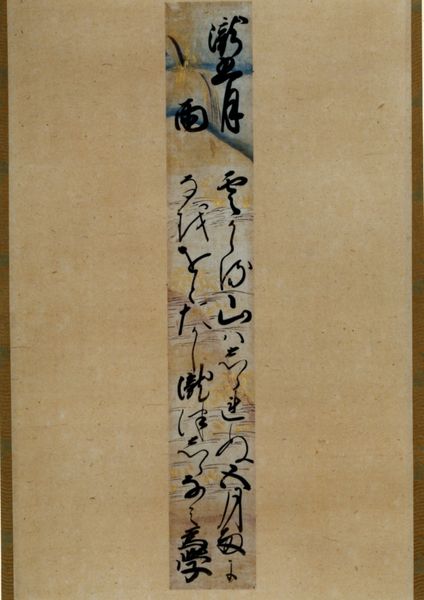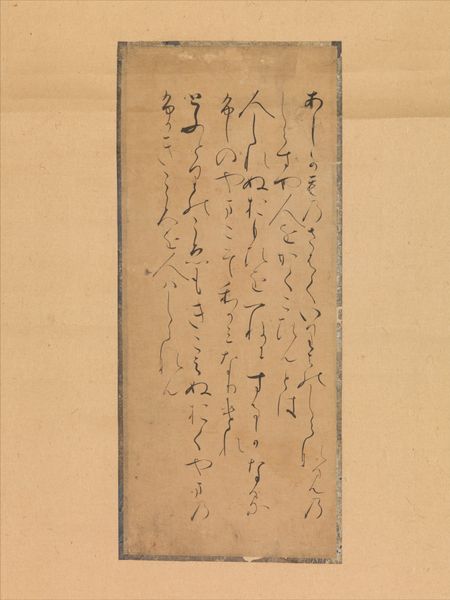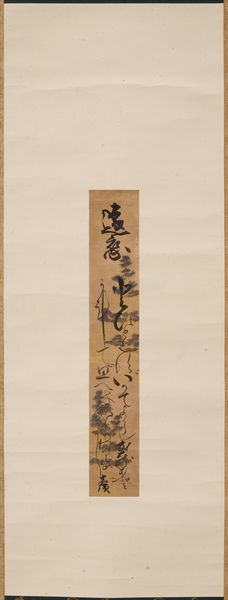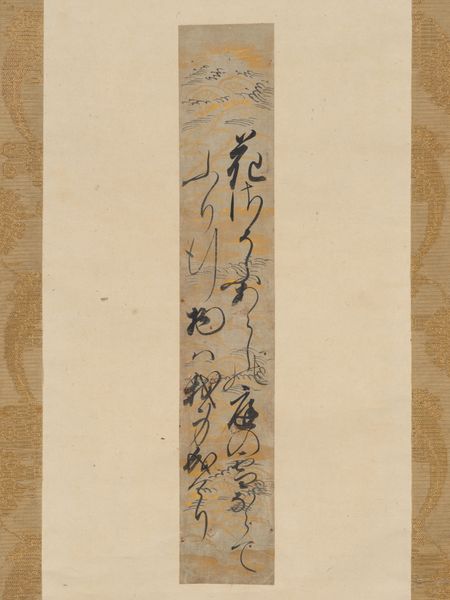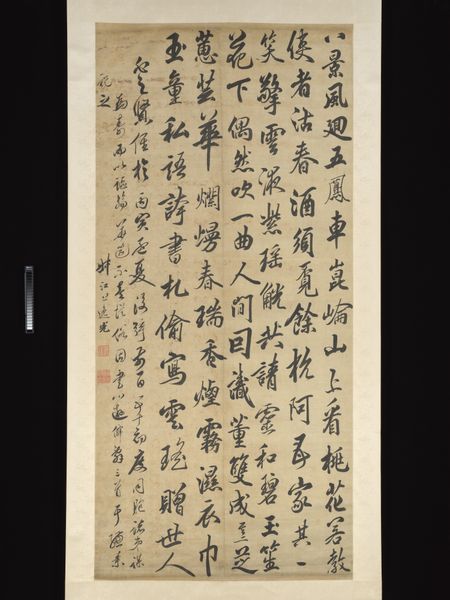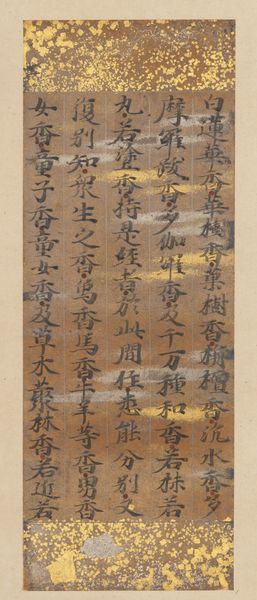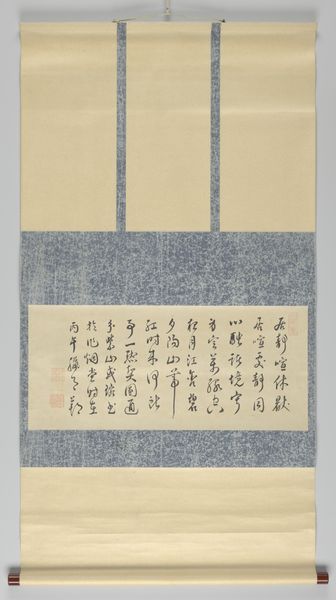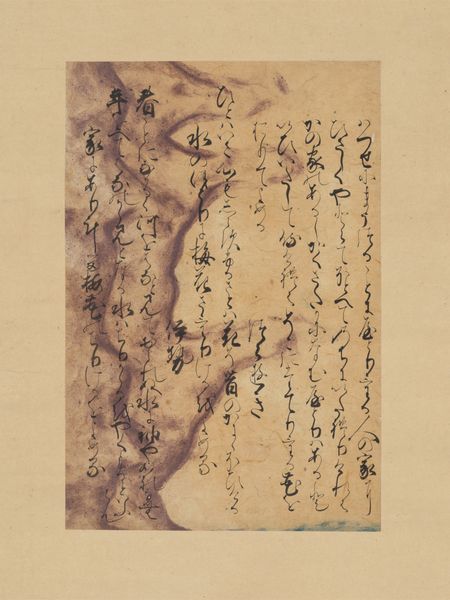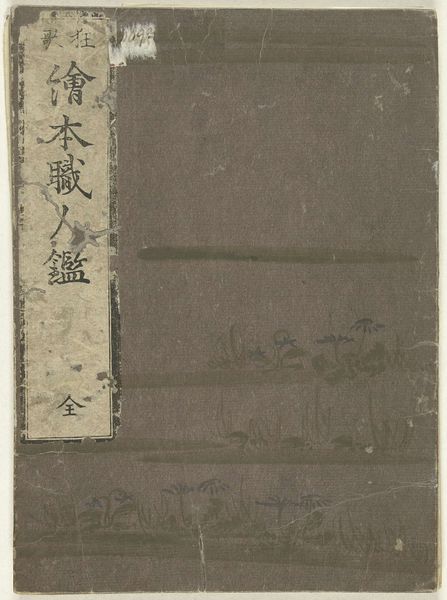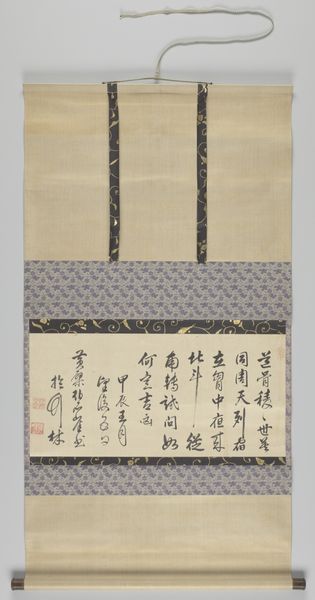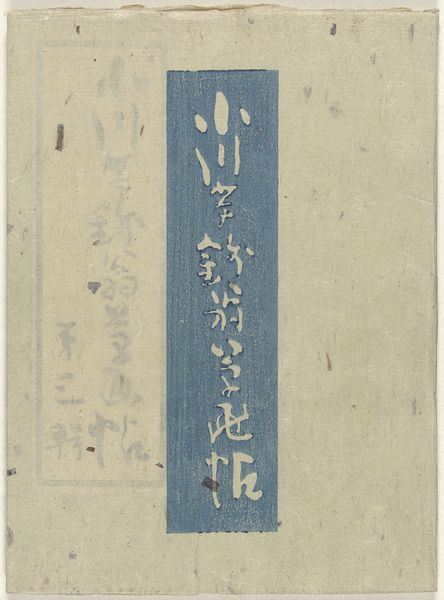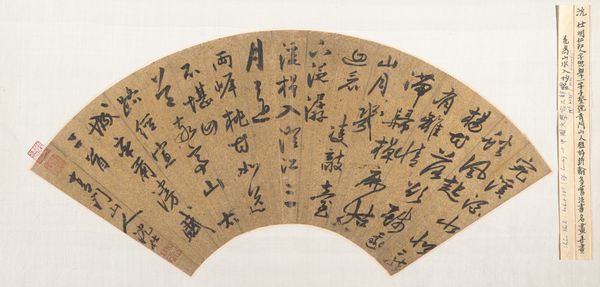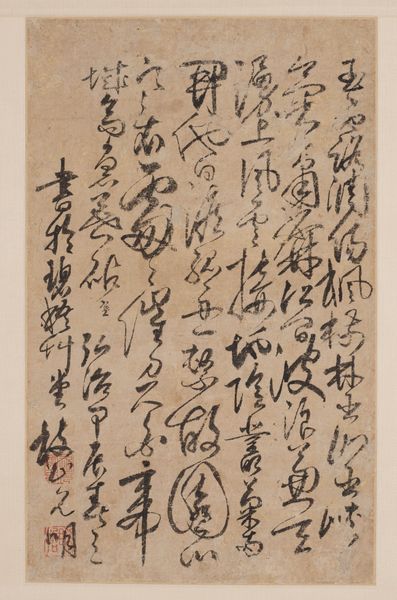
paper, ink
#
ink painting
#
asian-art
#
japan
#
paper
#
ink
#
line
#
calligraphy
Dimensions: 23 1/2 × 11 3/4 in. (59.69 × 29.85 cm) (image)
Copyright: Public Domain
Curator: At first glance, this work appears subdued, almost minimal. I’m immediately drawn to the textural qualities of the aged paper and the gestural freedom in the brushstrokes. What are your first thoughts? Editor: I am immediately aware of how the weight of language and power dynamics operate in this historical artifact. We must remember the context of who made these marks, and for whom. Curator: Precisely. We are looking at a pair of waka tanzaku, vertical poem cards, created sometime between the late 16th and early 17th centuries. They were rendered in ink on paper by Konoe Nobutada, a prominent courtier and calligrapher. These exquisite cards are now part of the collection at the Minneapolis Institute of Art. Editor: As we observe these forms, we also have to deconstruct them, acknowledging their place within rigid court structures. How did Nobutada navigate and perhaps subtly critique those societal expectations through his art? What social codes are embedded in these brushstrokes? Curator: Absolutely, those are essential considerations. Nobutada's calligraphy was highly regarded, influencing many subsequent artists. What I find remarkable is how he synthesizes Chinese calligraphic principles with Japanese aesthetics in this period. Editor: And it’s critical that we consider the function and dissemination of art. The elite enjoyed exclusive access to art and its interpretation, reinforcing existing power structures. These cards are not just pretty artifacts. Curator: I agree, and yet, one could argue that through the sharing and gifting of art and poems a degree of intimacy and connection emerged within the confines of the Imperial court. Editor: Yes, there can be interpersonal meaning and commentary embedded within this highly controlled structure of life at the imperial court. Curator: Thinking about Nobutada and these "Two Waka Tanzaku", it brings up so much concerning social status and artistic conventions. Editor: Indeed. Reflecting on the weight and importance of objects helps reveal to the viewer both a lens into the past as well as today.
Comments
No comments
Be the first to comment and join the conversation on the ultimate creative platform.
